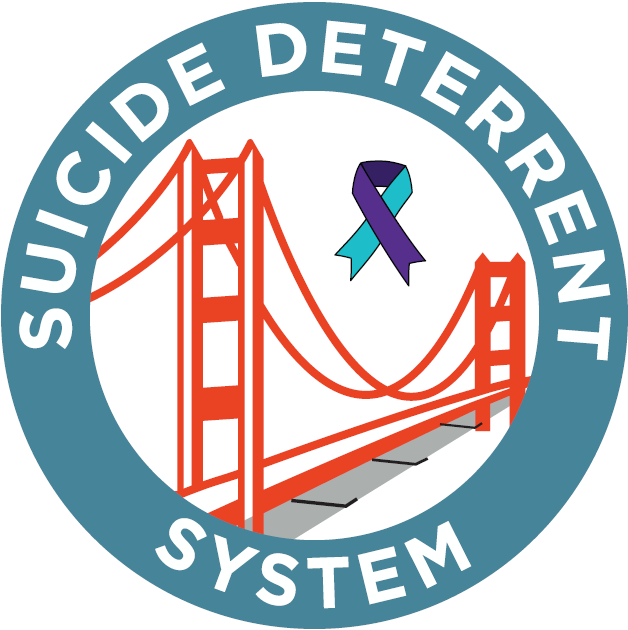Politicians, community advocates, and transportation agencies came together this morning to commemorate the beginning of the construction of the suicide deterrent system on the Golden Gate Bridge. Following the ceremony, speakers, Bridge District board members, and families who have lost loved ones all planted yellow marigolds in the hillside.
Democratic Leader Nancy Pelosi spoke first, saying: “What a bittersweet day. The joy of the prospect of saving lives, the sadness of those we’ve lost. The Golden Gate Bridge is a source of immense pride in the Bay Area, but for far too many families it has also been a place of pain.” She added, “We are honoring a deep moral responsibility to save lives whenever and wherever we can.”
Senator Dianne Feinstein said: “This net is a net whose time has really come. 39 people died last year alone. What you’re doing here today, what the Bridge is doing, what the taxpayers are doing, will hopefully turn that number to zero.”
Congressman Jared Huffman’s district includes the northern side of the Golden Gate Bridge. He said, “Make no mistake, we would not be here today, this would not be happening, but for these incredible survivors.”
Kymberlyrenee Gamboa lost her 18 year old son Kyle to suicide on the Golden Gate Bridge in 2013. She and her husband have been strong advocates for a physical suicide deterrent. “Kyle is what led us to the journey to the Golden Gate Bridge, and to ask how and why suicide could happen here, and how to prevent future suicides at the Golden Gate Bridge.” She also said, “Today marks the beginning of the end of suicides on the Golden Gate Bridge. Soon, no family will experience the devastation and tragedy of a suicide on the Golden Gate Bridge.”
Assemblymember Phil Ting said, “I can’t wait until we come back here in a couple years to see this amazing net built. You can’t see it from far away, you’ll have to be pretty up close. But we’ll be back again to celebrate that so we can pay honor to all the memories and all your loved ones. That’s the best way we can honor them, is to get this done.”
Caltrans’ Bay Area Office Director Bijan Sartipi shared some of the behind the scenes work involved: “This was a long and often difficult project. One that brought a number of partners from all levels of government, the state, the federal, and also from the private sector to get us here.” “If these measures save just one life…all the hard work will all be worth it, but this net will do a lot more than that.”
Metropolitan Transportation Commission Chair Jake Mackenzie said: “You can establish a policy, but you implement it through the budget. We are delighted to be part of this, to get us to this day.” Mackenzie also highlighted the important work of Tom Ammiano, “I got the data on you, Ammiano. 14 years as San Francisco Supervisor, 12 years as a Golden Gate Bridge District Director, 8 years as an MTC Commissioner, 6 years as a state Assemblymember. All of these are your former titles. But the title that you will never relinquish is champion of the suicide deterrent project.”
Photos and a Facebook Live feed of the ceremony have been posted at https://www.facebook.com/goldengatebridge/ Highlight and interview clips will be posted in the coming days.
Renderings of the suicide deterrent system are available here: http://www.ggbsuicidebarrier.org/studydocuments.php.
In May, contractors will begin installing temporary fencing along the Bridge approaches and around the tower legs. They will create detailed measurements so they can begin manufacturing the stainless steel net. In mid-2018, they will begin installation of the suicide deterrent. Similar deterrent systems have been used in various locations around the world, but never in this scale. The deterrent at the Golden Gate Bridge will span 1.7 miles of roadway on each side. It will be located 20 feet down from the sidewalk and extend 20 feet out, over the water. The suicide barrier will be built over four years, with an expected completion date in 2021.
Funding for the project came from multiple sources. The total cost is $211 million, which includes construction ($204m), design and environmental expenses.
| $74 |
Metropolitan Transportation Commission |
| $70 million |
Caltrans |
| $60 million |
Golden Gate Bridge, Highway and Transportation District |
| $7 million |
State Mental Health funds via State Budget (Prop 63) |
| $0.4 million |
Other (donations, etc.) |
In 2016, 39 people died by suicide on the Golden Gate Bridge. Bridge Patrol Officers also conducted another 184 successful interventions to keep people from harming themselves at the Bridge.
Suicide barriers have proven extremely effective. The 1978 Sieden study at the Golden Gate Bridge showed that 90 percent of those stopped from jumping did not later die by suicide or other violent means. A Harvard School of Public Health article reviewing numerous studies showed more broadly that “Nine out of ten people who attempt suicide and survive will not go on to die by suicide at a later date.”
